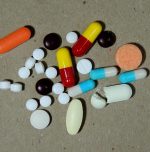Facts about FDC Drugs

Indian government banned 328 Fixed Dose Combination (FDC) drugs with immediate effect.
These drugs are prohibited from manufacture for sale, distribution and sale.
Some popular drugs included in these banned drugs are Saridon, D-cold total, Panderm cream, Gluconom PG and Corex.
Here are some important facts about FDC Drugs:
- FDC drugs refer to the combination of two or more active ingredients in a fixed dosage ratio.
- Government banned these drugs on the advice of Drugs Technical Advisory Board (DTAB).
- As per advise of this panel, these FDCs do not have any therapeutic justification. Moreover, there are potential risks of using them.
- India has nearly 2,000 FDCs compared to the US where only 500 are there.
- In addition to the 328 drugs, 6 more FDCs have also kept under scrutiny by the government to be restricted for sale.
- With the ban of these FDC drugs, around 6,000 brands of medicines include painkillers, anti-diabetic, respiratory and gastro-intestinal medicines are banned.
- The DTAB recommended these drugs as per the Drugs and Cosmetics Act, 1940. Earlier, in 2016, when the health ministry tried to ban them, the pharmaceutical companies brought this matter to the court.
- Mixing two drugs result in a new medicine. Pharmaceutical companies have to apply for a fresh license for new medicines from the Drugs Controller General of India. They also have to prove its safety by conducting trials after which they would enter in the market for sale.
- If the drug contains a single component or if it is an individual drug, then the companies will have to take permission of central government. But, companies make combination of drugs and get licenses from the state governments.
- Even though, these FDCs do not have any therapeutic justification, it is alleged that they are recommended by some physicians due to the hope that one of the drugs would work when they could not identify the exact cause of an illness of the patient.
You may also like
Image Reference: Livemint
Recent Posts
- Magha Masa: A sacred month of spiritual renewalMagha Masa is believed to ease spiritual burdens and restore inner balance.
- WhatsApp refreshes group chats with smarter toolsTo enhance this experience, WhatsApp has rolled out new features for group chats.
- Give blood without fear: A calm and confident guideMany first-time donors feel anxious before their appointment.
- Magha Masa: A sacred month of spiritual renewal
What’s new at WeRIndia.com
News from 700+ sources
-
Chennais iconic annual fair at Island Grounds turns 50
-
Narrating stories of the worlds women mathematicians, in portraits
-
Tax structure for MNCs with India biz may be reworked
-
Budget 202627: Government plans double-digit hike in rural scheme allocations to boost growth, demand
-
Usha Vance age, children, pregnancy and family: When is second lady’s fourth child due and is it a boy or girl? Here’s early life, career and husband details
-
Stunning late goal earns Brighton draw against Bournemouth
-
WeRIndia – A News Aggregator
Visit werindia.com for all types of National | Business | World | Politics | Entertainment | Health related news and much more..










Leave a Reply